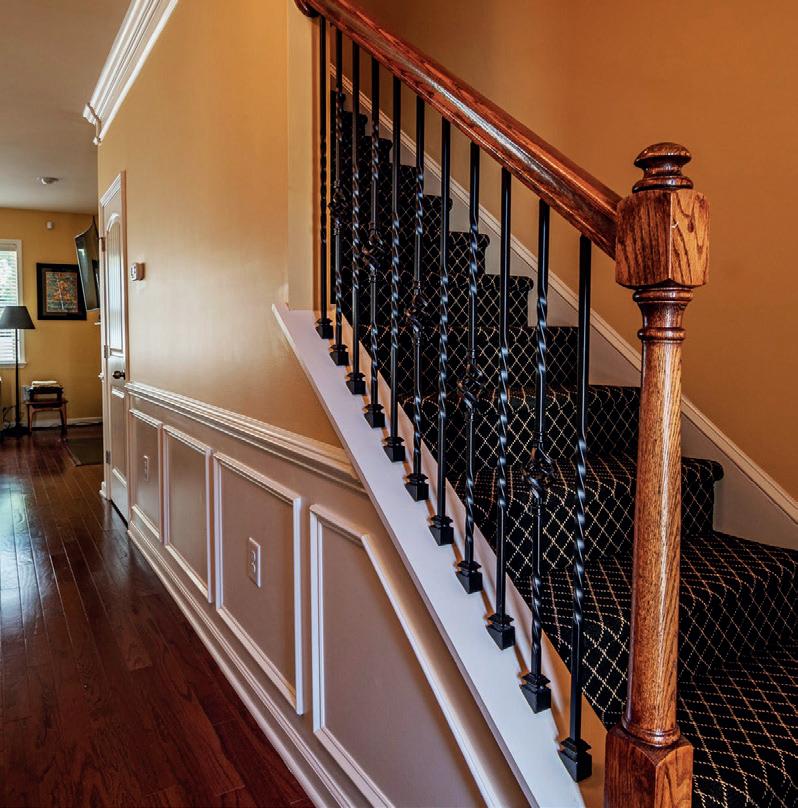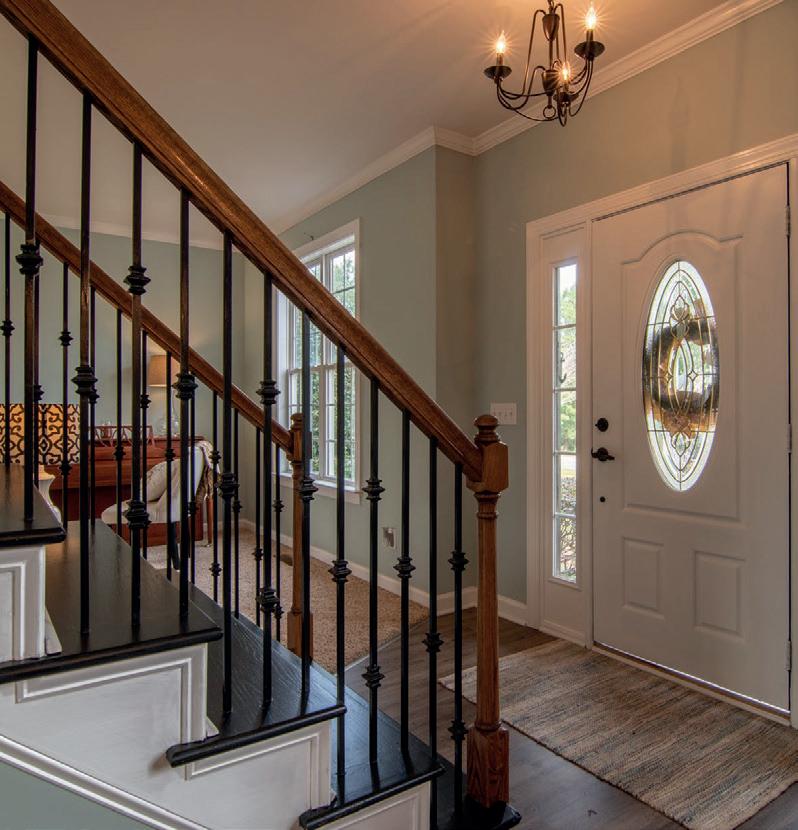
5 minute read
COVID-19 is impacting the self-build market? We’ve talked to Loan.co.uk's CEO, Paul McGerrigan, to find out how Coronavirus is changing the self-build mortgage scene
We’ve all heard the phrase first impressions count, and this certainly rings true when it comes to your house. In fact, a study by Independent Network revealed that it takes just 38 seconds for a guest to judge your home, so it’s important that your decor ticks all the right boxes. While you’re likely to take pride in each room you design, you shouldn’t neglect your hallway as this is the first area visitors will see.
Advertisement
One way to refresh your hallway and give your property’s value a boost is to renovate your staircase. Here, I will be sharing my top tips for doing so.
Plan your project smartly
Your staircase can make or break your hallway interiors: too subtle and it may look out of place, and too bold and it may make the area look chaotic. So, it’s important that you give some proper thought as to how you can strike a balance between the two.
The first step to renovating your staircase will be to check Building Regulations to ensure you won’t be in danger of making an unpermitted change. To comply with these regulations, you will need to ensure your new staircase:
Has a maximum rise of 220mm and a minimum going of 220mm
Doesn’t exceed a pitch of 42°
Has at least one handrail if less than 1m wide, or a handrail on both sides if it exceeds this width
Has handrails that aren’t shorter than 900mm Your landing is the very first thing that guests and potential buyers will see when stepping into your home, so it’s important that you’re showing it off to its full potential. One way to do this is by having a showstopping staircase. Here, Nick Acaster from Stair Rods Direct shares his tips for renovating your stairs to a professional standard.
Doesn’t have balustrade openings that are 100mm in width or wider
Has a minimum of 2000mm of clear headroom above the pitch line.
Once you’ve versed yourself with the regulations, you can then decide whether you just want to change the structural elements like newel posts, handrails and spindles, or want to switch up the look of your steps and risers.
Replace your stair risers
If you want to refresh your stair risers, you’ll need to remove the existing ones. This can be done using a hammer and chisel, positioning the point of the chisel in the joint where the treads and stair risers meet. You will need to lift the tread to loosen the riser and pull it free. If you’re struggling to do this, using a claw hammer can help to make it come away more easily.
As each riser becomes free, remember to number these in order with a pencil to help you ensure the replacement risers are put into the right place. You can then use the old risers as a template for measuring up your new ones: simply place them over the fresh piece of wood and trace around them using a pencil and use an orbital saw to cut them to size. Tidy any jagged edges up with some sandpaper.
Once you have measured up all of your risers correctly, dry fit them according to the numbers you pencilled on earlier, first placing them by hand to ensure they are properly aligned. You can then apply a blob of wood glue to the inner edges of the cut riser. Once this has dried, you can then hammer around two to four nails (depending on the size of your risers) in place to secure your risers.


Replace your spindles
If you’re changing your spindles, you should do this before you fit your new handrails. These can be removed by laying a thin handsaw blade where the bottom of the spindle and the top of the tread meet. A small dowel pin holds these two parts together, so you will need to saw between these. Once you’ve picked some stylish new spindles that’ll boost the appeal of your staircase, you’re now ready to install the replacements. Firstly, you’ll need to use the old spindle as a guide and mark out the length on the new spindle, cutting it with a handsaw and sanding down any rough edges. You can then fit and fix the spindle by fitting a new dowel pin that’s glued into place. Just make sure that you clear out the hole where the old dowel pin was before fitting the new one.
Change your handrails
If your handrails are looking worn, it can affect the appearance of your whole staircase, so it’s worth giving these a refresh. To do this, you’ll firstly need to remove your handrails by cutting them from the newel posts with a fine-tooth saw. You’ll want to make sure that you have somebody to help steady the rail and to support the cut end as you tackle the other side.
You may want to place a removed spindle temporarily in each end for additional support as you cut the handrail.
Add decorative elements
When you’ve put time and resources into improving or replacing the structural elements, you’ll no doubt want to decorate it nicely, too. If you’ve replaced your risers, you’ll no doubt have a beautiful, refreshed wooden staircase. And, while you mightn’t want to cover it up with carpet, however, adding a runner can add a point of interest to your hallway interiors, especially if you go with something that will stand out against the rest of your interiors. You could even add some stair rods for an extra decorative touch. These come in many styles and colourways, so will go with almost any interior style. Give your hallway some TLC by renovating your staircase. By improving structural elements and adding some decorative elements to your steps, you’re sure to create a space that’s the envy of all of your guests.





